Two reportedly killed after Iranian forces 'open fire on protestors' as demonstrations continue for third day
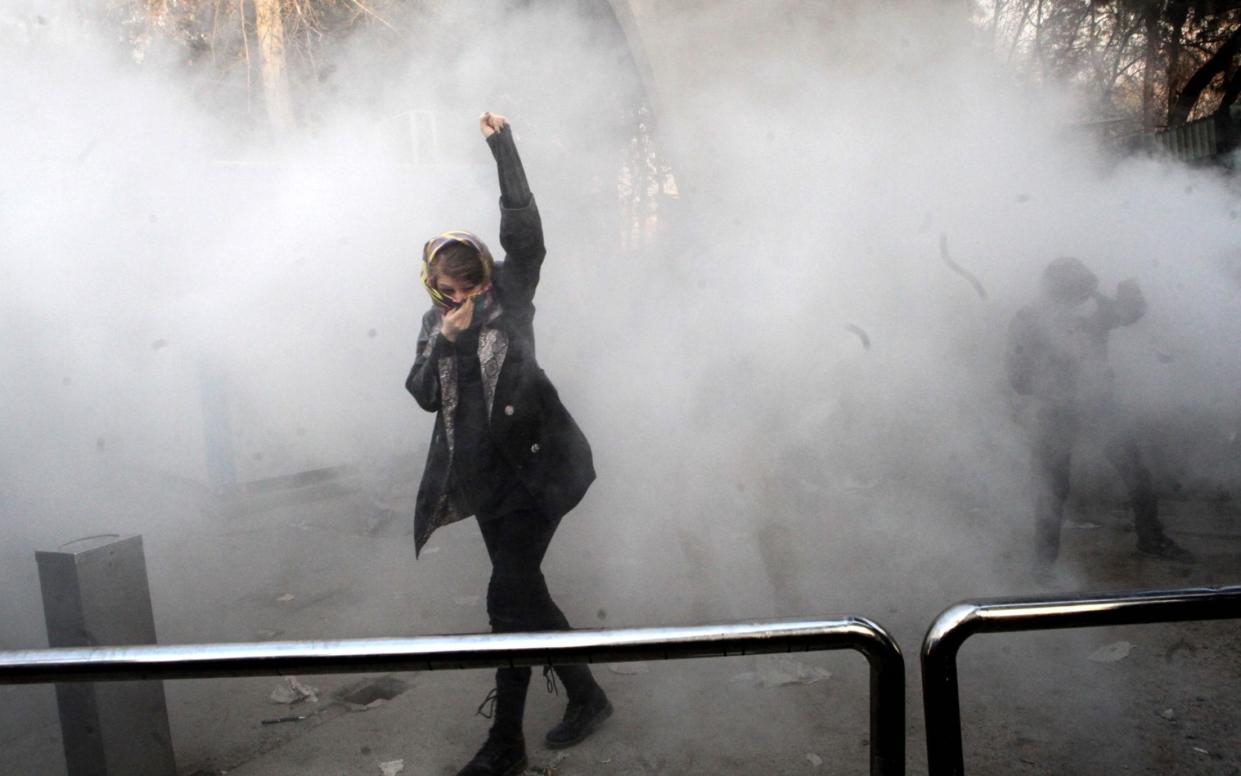
Two people are understood to have been killed after Iranian security forces reportedly opened fire on anti-government demonstrators on Saturday as the largest protests seen in the country since 2009 continued for a third day.
Reports of the two deaths were were posted on social media. There was no official confirmation of the fatalities but the posted images appeared to show several bodies being carried away after clashes with police in the western city in Dorud
Angry protests escalated in cities across Iran as demonstrators tore down posters of Ayatollah Khamenei, the Islamic Republic’s supreme leader, while police on motorbikes charged into crowds swinging batons.
Protesters reportedly stormed the governor’s compound in the western city of Arak and started fires at government offices in Ahvaz, a city in the country’s southwest.
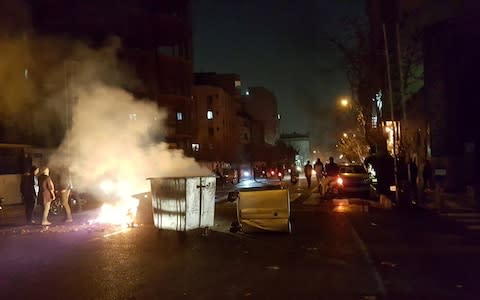
Donald Trump, the US president, warned Iran’s government that the “world is watching” its response to the demonstrators. He accused authorities of “squandering of the nation’s wealth to fund terrorism abroad”.
Later, he posted two clips of his speech to the UN General Assembly in September in which he took aim at Iran, which Washington has held out as its top adversary in the Middle East.
"Oppressive regimes cannot endure forever, and the day will come when the Iranian people will face a choice," he tweeted, quoting from the speech.
The Iranian government shot back at Mr Trump, calling his comments “deceitful” and “opportunistic”.
مخاطبان بیبیسی فارسی این تصاویر را از "خیابان طالقانی #ابهر" فرستادهاند. گروهی از مردم در این ویدیو بیلبورد با عکس آقای #خامنهای را به زیر میکشند pic.twitter.com/q5RejFwYV2
— BBC Persian (@bbcpersian) December 30, 2017
The demonstrations began on Thursday in the northeastern city of Mashhad, largely over the rising cost of living, but quickly spread around the country and became more explicitly critical of Ayatollah Khamenei and of Hassan Rouhani, Iran’s president.
While the security forces showed relative restrain during the first 48 hours of protests, their response hardened on Saturday and authorities reportedly cut off some internet access in Tehran to try to stop the spread of unrest.
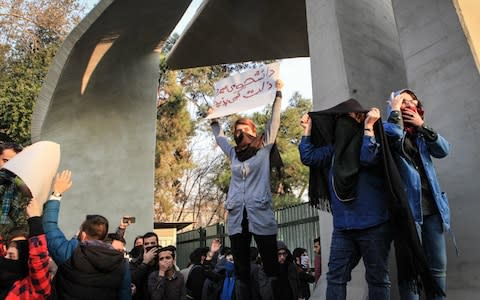
The chief executive of Telegram, a messaging app, agreed to shut down a channel popular with the opposition for allegedly encouraging violence after being contacted by an Iranian minister.
Several dozen students at the University of Tehran protested at the campus gates yesterday and chanted “death to the dictator” in apparent reference to Ayatollah Khamenei.
Security forces fired tear gas and made arrests and the protesters were eventually replaced by a larger crowd of pro-government students who chanted “death to the seditionists” as they took back control of the gates.
Thousands of people also turned out for annual pro-government rallies to mark the defeat of the last major protest movement in 2009.
Confrontations reported between security forces and students inside Tehran University #Iranpic.twitter.com/LTtXtDcQIp
— Michael Horowitz (@michaelh992) December 30, 2017
Abdolreza Rahmani-Fazli, the interior minister, warned people not to take part in “illegal gatherings” and said “they will create problems for themselves and other citizens”.
Mr Trump said in a tweet that the “Iranian government should respect their people’s rights, including right to express themselves. The world is watching!”
It was not clear what impact his intervention would have. Mr Trump’s decision to focus worldwide attention on the protests may discourage the Iranian government from using violence. But the protesters may also be sullied by association with Mr Trump, who is widely unpopular in Iran.
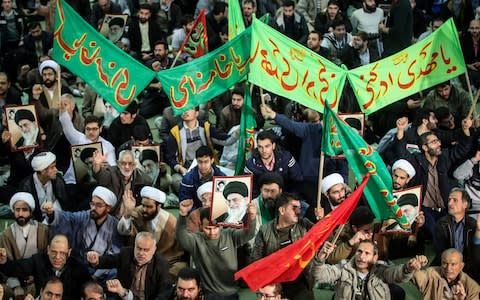
"The Iranian people see no value in the opportunistic claims by American officials and Mr. Trump,” a foreign ministry spokesman said.
The protests are a wildcard in the complicated political balance between Mr Rouhani, a relative moderate who was re-elected this year as president, and his more hardline political rivals.
Footage from Tehran University with security forces looking on: “Hardliners, reformists, it’s game over!” #Iran#IranProtestspic.twitter.com/wiwWQ4ZAJL
— Holly Dagres (@hdagres) December 30, 2017
While the hardliners may have initially encouraged the demonstrations as a sign of popular discontent with Mr Rouhani’s economic management of Iran, the protests have quickly expanded and taken aim at the core pillars of the Islamic Republic, including the supreme leader.
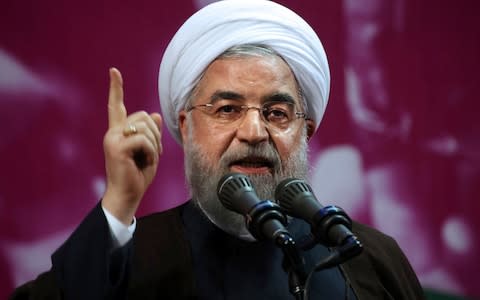
Mr Rouhani has made no public comment since demonstrations began on Thursday. Some analysts said he might try to turn the demonstrations to his advantage by promising a more aggressive campaign against corruption in response to the demands from people on the streets.
"The country is facing serious challenges with unemployment, high prices, corruption, lack of water, social gap, unbalanced distribution of budget," said Hesamoddin Ashena, his cultural advisor. "People have the right for their voice to be heard."
One of the popular chants has “No Gaza No Lebanon, My Life for Iran”, an expression of frustration money being spent on Iran’s foreign interventions around the Middle East instead of on domestic programmes.

